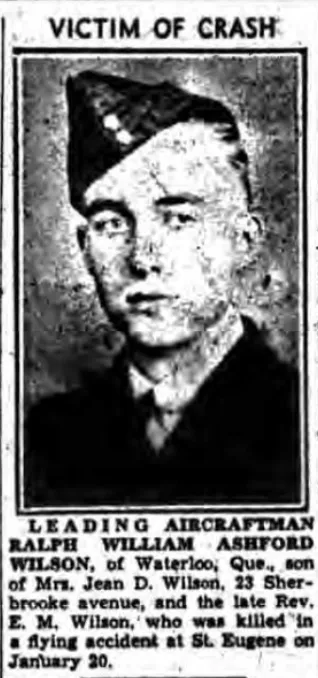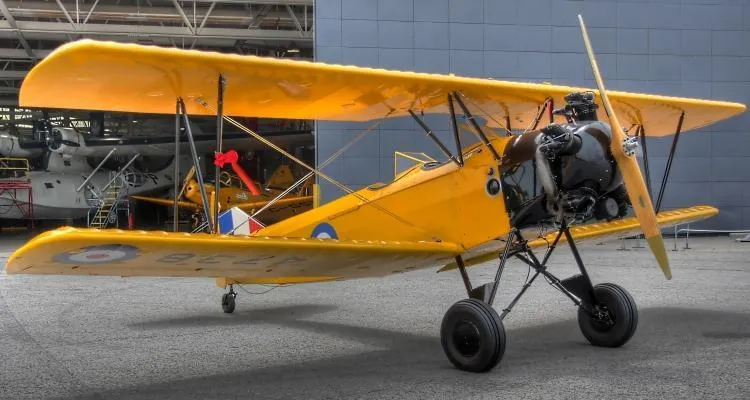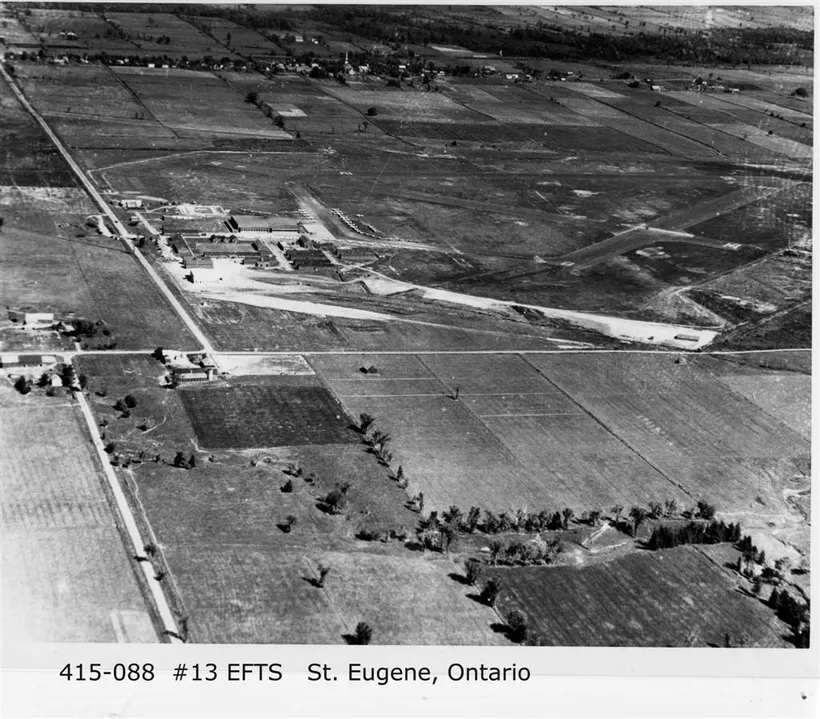Wilson, Ralph William Ashford (Leading Aircraftman)
Killed in Flying Accident 1942-January-20


Birth Date: 1924
Born:
Parents: Son of Ernest M Wilson and Jean Darling Wilson of Waterloo.
Spouse:
Home: Waterloo, Quebec
Enlistment:
Enlistment Date: unkown date
Service
RCAF
Unit
13 EFTS- Elementary Flying Training School
Base
St Eugene, Ontario, Canada
Rank
Leading Aircraftman
Position
Pilot
Service Numbers
R/117659
Home
Finch serial: 4646

The Fleet Finch was the final version of a whole family of light biplane trainers, designed by Consolidated Aircraft of Buffalo, NY and intended for civilian use. Few of these aircraft were marketed under the Consolidated name, as most were sold through Fleet Aircraft Canada, under a range of model numbers. Only the RCAF gave any of these models names, calling the Model 7 the Fawn and the Model 16 the Finch. These aircraft were built from 1930 to 1941, all at Fort Erie, Ontario.
The Finch was developed to meet an RCAF requirement for a fully aerobatic, primary trainer. The RCAF ordered the first batch of aircraft in July 1939 and powered by a Kinner R5-2, 160 hp engine, they were designated the Fleet Finch Mk. I. Most of these aircraft were delivered to the RCAF Central Flying School at Trenton, Ontario by early 1940.
The RCAF placed a further order for primary trainers with Fleet in January 1940. The Fleet Finch Mk. II, powered by a Kinner B-5R, 130 hp engine, first flew from Fort Erie in March 1940. During the following year, over 400 Fleet Finch Mk. IIs were delivered to BCATP Elementary Flying Schools right across Canada.
The Fleet Finch was well liked by the RCAF as it was a rugged aircraft, was relatively easy to fly and withstood the abuse of novice pilots. Some Fleet Finches remained in service with the RCAF until 1947, but most were retired by October 1944. Their role as a primary trainer was taken over by Fairchild PT-26 Cornell. Canadian Warplane Heritage Museum
Aircraft Images
Finch 4646
Finch Finch II 4646
Category A damage on 20 January 1942 while with No. 17 Elementary Flying Training School at Stanley, NS.1940-10-15 Taken on Strength 2019-08-20
1940-December-03 Accident: 13 Elementary Flying Training School Loc: St Eugene Ontario Names: Bryson | Tovell
1940-December-11 Accident: 13 Elementary Flying Training School Loc: Rcaf Stnorth Rockliffe Names: Kelly
1941-April-18 Accident: 13 Elementary Flying Training School Loc: Aerodrome Names: Sails
1941-April-30 Accident: 13 Elementary Flying Training School Loc: Aerodrome Names: Scroggs
1942-January-20 Accident: 13 Elementary Flying Training School Loc: Deaulieus Farm Names: Wilson
1942-02-26 Struck off Strength 2019-08-20
Unit Desciption
13 EFTS (13 Elementary Flying Training School)
An Elementary Flying Training School (EFTS) gave a trainee 50 hours of basic flying instruction on a simple trainer like the De Havilland Tiger Moth, Fleet Finch, or Fairchild Cornell over 8 weeks.Elementary schools were operated by civilian flying clubs under contract to the RCAF and most of the instructors were civilians. For example, No. 12 EFTS Goderich was run by the Kitchener-Waterloo Flying Club and the County of Huron Flying Club.The next step for a pilot was the Service Flying Training School.

More information on RCAF Station St Eugene can be found here
RCAF.info - RCAF Station St Eugene Ontario
RCAF.info - Relief Landing Field Hawkesbury Ontario
Notable students from 13 ETFS Wing Commander Fred Jones
![]() Vintage Wings - Wing Commander Fred Jones and his connection to the Poem High Flight
Vintage Wings - Wing Commander Fred Jones and his connection to the Poem High Flight